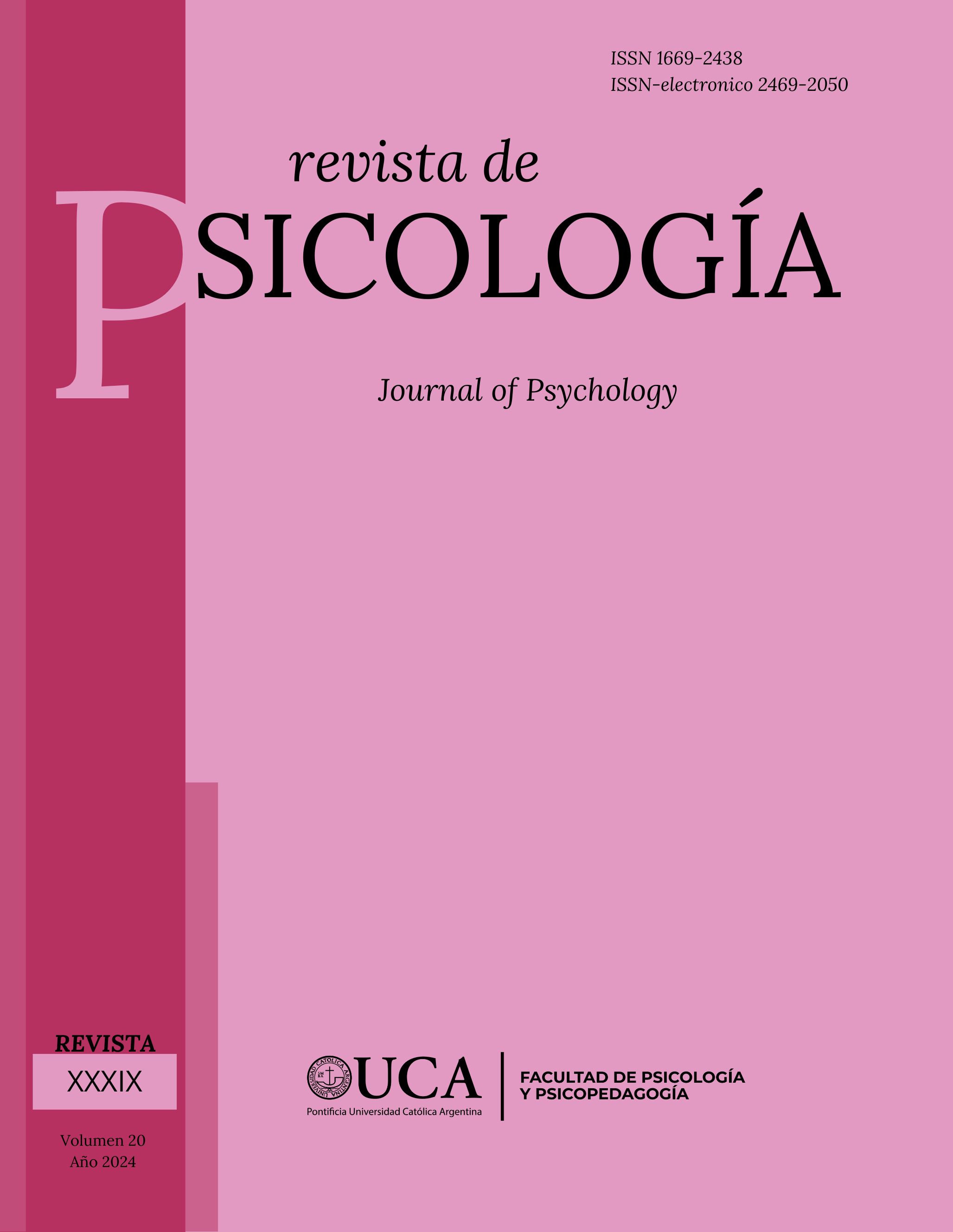Suicide Problem. A Descriptive Study of Hospital Admissions in the General Hospital of Paraná City Between 2018 and 2022
DOI:
https://doi.org/10.46553/RPSI.20.39.2024.p74-95Keywords:
suicide, self-harm, hospitalAbstract
Suicide is a public health problem. The present study was carried out in the context of on-call admissions at the Paraná, Entre Ríos, Argentina, San Martín Hospital that had any of the following reasons for consultation: suicide attempt, self-injurious behaviors without intent to kill, and suicide attempts in context of problematic substance use in the period 2018-2022. The objectives were: to describe the frequency of reasons for consultation within suicidal problems in the period 2018-2022; to evaluate the association between the reasons for consultation and the year of admission; the reasons for consultation and sex; the reasons for consultation and the age of the subjects; and describe the protective and risk factors. We worked with 893 clinical histories, which corresponded to 295 men (33%) and 598 women (67%) between 15 and 93 years of age (M= 31.16 DS= 14.76). A questionnaire prepared by experts in the field of mental health at the hospital was used. Frequencies were obtained and Pearson's Chi squares were calculated to assess the association between categorical variables. An association was found between the reason for consultation and the year of admission, with an increase in the frequency of self-harm without the intention of killing in 2022 and an increase in suicides in the context of problematic consumption in 2021. An association was observed between the reason for consultation and age with an increase in suicide attempts in young people and an increase in self-harm without the intention of killing in middle adulthood. An association was observed between the reason for consultation and age. As a risk factor, the presence of stressful life factors stands out and family support stands out as protective factors, although schooling and peer support decrease in adolescents and young people.
Downloads
References
Barrio, A. L., Obando, D., Ardila-Gómez, S., Wright, R., Marin, L., Pisonero, J., D’Agostino, A., Bolzán, A. G., Pesci, S., & Varela, T. (2023). Mortalidad por suicidio en la provincia de Buenos Aires: epidemiología y contexto pandémico por COVID-19 en perspectiva histórica 2009-2020. Revista Argentina De Salud Pública, 15. Recuperado a partir de https://rasp.msal.gov.ar/index.php/rasp/article/view/823
Carrasco, M. Á., Carretero, E. M., López-Martínez, L. F., & Pérez-García, A. M. (2023). Eficacia de los tratamientos psicológicos para los comportamientos autolesivos suicidas y no suicidas en adolescentes. Revista de psicología clínica con niños y adolescentes, 10(1), 53-67. https://doi.org/10.21134/rpcna.2023.10.1.7
Fondo de las Naciones Unidas para la Infancia (2019): El suicidio en la adolescencia. Situación en la Argentina. Buenos Aires, Argentina: UNICEF. Recuperado de: https://www.unicef.org/argentina/media/6326/file/Suicidio_adolescencia.pdf
Gámez Guadix, M. (2023). Autolesiones y retos virales entre adolescentes. Salud, Ciencia y Tecnología – Serie de Conferencias, 2, 139. https://doi.org/10.56294/sctconf2023139
Griffa, M. C. & Moreno, J. E. (2008). Claves para una psicologia del Desarrollo, Volumen II. Buenos Aires: Lugar Editorial.
Irigoyen-Otiñano, M., Ibarra-Pertusa, L., Nicolau-Subires, E., Albert-Porcar, C., Adrados-Pérez, M., Buil-Reiné, E., Arenas-Pijoan, L., Torterolo, G., Sánchez-Cazalilla, M., Puigdevall-Ruestes, M., & Llorca-Bofí, V. (2023). Atenciones urgentes realizadas durante la pandemia por consumo de tóxicos en una provincia española. Adicciones. http://dx.doi.org/10.20882/adicciones.1819
Krmpotic, C. S., & Barron, E. V. (2021). La Asistencia on-line frente al riesgo de suicidio juvenil en Argentina.: Alcances y retos urgentes. Aiken. Revista de Ciencias Sociales y de la Salud, 1(1), 21-34.
López Steinmetz, L. C. (2017). Caracterización de riesgo diferencial-demográfico en urgencias psicológicas: intento de suicidio y otros motivos de consulta. Revista Argentina de Ciencias del Comportamiento, 9(1), 44-53. https://doi.org/10.32348/1852.4206.v9.n1.12904
Martínez Cortés, S. (2023). Impacto de la pandemia de COVID 19 en los consumidores de sustancias ilegales y los servicios de reducción de daños: una revisión bibliográfica. [Tesis de grado]. Universidad de Alicante. Recuperado de http://hdl.handle.net/10045/134702
O'Connor, R. C. & O'Neill, S. M. (2015). Mental health and suicide risk in Northern Ireland: a legacy of the Troubles?. The Lancet Psychiatry, 2(7), 582-584. https://doi.org/10.1016/s2215-0366(15)00240-0
Organización Mundial de la Salud (2010) Towards evidencebased suicide prevention programmes. World Health Organization Regional Office for the Western Pacific”. OMS. Ginebra.
Organización Panamericana de la Salud (2014) Prevención del suicidio: un imperativo global. Washington, DC: OPS.
Organización Panamericana de la Salud (2021). Mortalidad por suicidio en la Región de las Américas. Informe regional 2010-2014. Washington, D.C. https://doi.org/10.37774/9789275323304.
Plan Nacional de Salud Mental 2021 – 2025. Dirección Nacional de Salud Mental Ministerio de Salud de la Nación Argentina. https://bancos.salud.gob.ar/recurso/plan-nacional-de-salud-mental-2021-2025
Resolución 1480/2011 [Ministerio de Salud Nacional]. Guía para Investigaciones con Seres Humanos. 21 de septiembre de 2011
Restrepo Tobón, M. V., Mejía Zapata, S. I., & García Peña, J. J. (2023). El intento suicida en relación con la edad y otras variables psicosociales. Un análisis de contexto. Revista Virtual Universidad Católica del Norte, 69. https://doi.org/10.35575/rvucn.n69a9
Rodriguez, L. M., Moreno J. E., & Mesurado, B. (2021). Friendship relationships in children and adolescents:
Positive development and prevention of mental health problems. En P. Á. Gargiulo & H. L. Mesones-Arroyo (Eds.), Psychiatry and Neuroscience Update. New York, NY: Springer. https://doi.org/10.1007/978-3-030-61721-9_31
Shneidman, E. S. (1987). A psychological approach to suicide. En G. R. VandenBos & B. K. Bryant (Eds.), Cataclysms, crises, and catastrophes: Psychology in action (pp. 147–183). American Psychological Association. https://doi.org/10.1037/11106-004
Solis Espinoza, M. & Gómez-Peresmitré, G. (2020). Cuestionario de Riesgo de Autolesión (CRA): propiedades psicométricas y resultados en una muestra de adolescentes. Revista Digital Internacional de Psicología y Ciencia Social, 6(1), 123-141.
Tuesca Molina, R. & Navarro Lechuga, E. (2003). Factores de riesgo asociados al suicidio e intento de suicidio. Salud Uninorte, 17, 19-28.
Zaragozano, J. F. (2017). Autolesiones en la adolescencia: una conducta emergente. Boletín de la sociedad de pediatría de Aragón, La Rioja y Soria, 47(2), 37-45.
Published
How to Cite
Issue
Section
License
Copyright (c) 2024 Marcelo Rodriguez Rodriguez, María Paula Nesa, María Fernanda Correa, Sabrina García Abib, Norma María del Rosario Vera, María Lucía Beltrame, Sofía Elena Herrero, Mariana Ojeda

This work is licensed under a Creative Commons Attribution-NonCommercial-ShareAlike 4.0 International License.



















